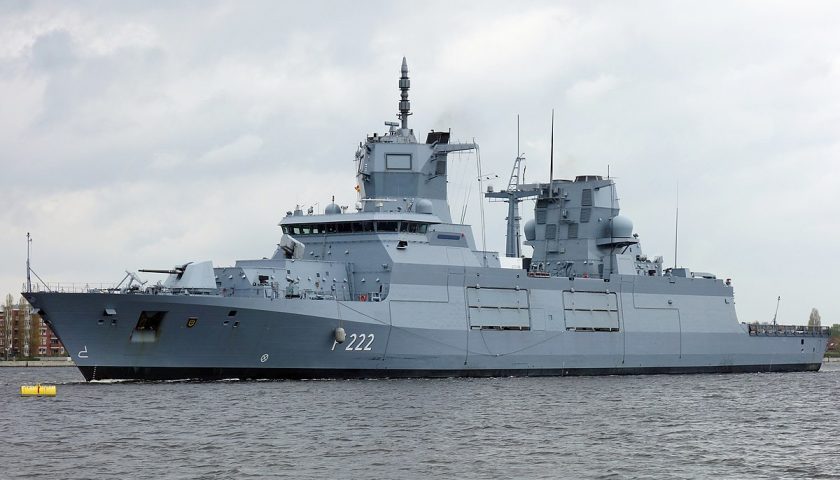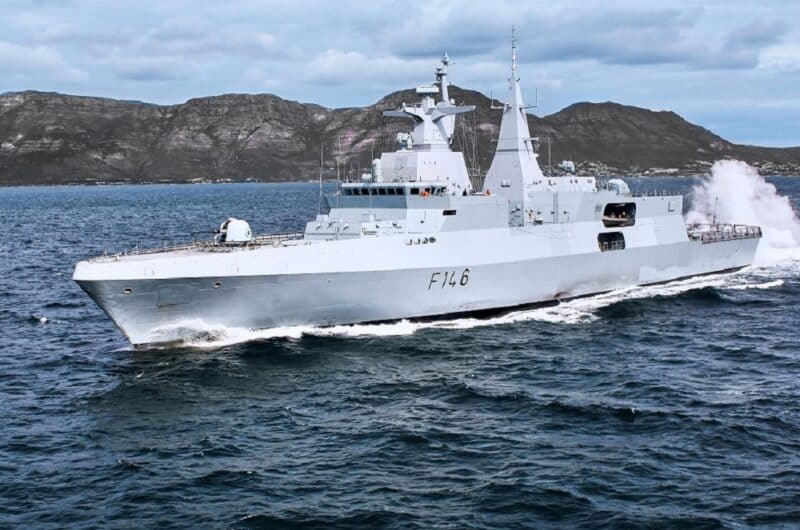The Navy had been, during the Cold War, the poor relation of the armed forces of the Federal Republic of Germany. For Bonn, the aim was both to limit its own power projection capabilities inherent in the high seas fleets, in compliance with its constitution, and to respond to a specific NATO need, namely to control the Baltic Sea, only the FRG and Denmark had, at that time, coasts on this sea. In fact, the Bundesmarine then favored relatively compact ships adapted to the specific needs of the Baltic and the North Sea, the most obvious example being its submarine fleet composed of 11 Type 205, conventionally powered submarines of only 44 meters long and 455 tons in diving, manned by a crew of 22 men, and with limited performance, especially in terms of diving with a maximum depth of 100m. However, these submarines, such as the Cheetah, Albatros and Tiger class corvettes, which also did not exceed 500 tons, were well suited for the missions allocated by NATO to this navy in the Baltic Sea.
However, the Bundesmarine had a few ocean-going ships, such as the 4000-ton Hamburg-class destroyers produced in 4 units between 1959 and 1964, or the 3 Lutjens-class anti-aircraft destroyers that entered service from 1969. However, compared to other major European navies, such as the Royal Navy, the Marine Nationale and the Marina Militare, the Bundesmarine was clearly behind in terms of high seas capabilities. Things have changed somewhat since German reunification and the fall of of the Soviet bloc. Indeed, where the Baltic coasts were controlled above all by the Soviet Union (Russia, Estonia, Lithuania and Latvia), by its Polish and East German allies, as well as by two neutral countries, Sweden and Finland, the map has changed drastically since then, with Russia now having only 170 km of coastline on this sea, 10 times less than it controlled during the Cold War. These geographical changes, as well as the evolution of perceived geopolitics, led to a profound transformation of the German naval forces, which replaced its 11 Type 205s with 6 AIP Type 212 submarines of 1830 tons, and admitted to service larger ships better suited to the high seas, such as the 3 Sachsen-class anti-aircraft destroyers of 5800 tons, the frigates 4 Brandenbourg frigates of 4500 tons, as well as the 4 heavy frigates of more than 7000 tons of the Baden-Wurtenberg class.

From 2028, the Bundesmarine must receive 4 new F126 frigates intended to replace the 4 Brandenburg entered into service between 1994 and 1998. The new ships of the MKS 180 program, always designated as frigate, will reach a tonnage of 10.000 tons for a length of 166 meters. However, their configuration is much debated across the Rhine. Indeed, despite a large tonnage, a very significant autonomy at sea and enhanced survivability, the F126s will be remarkably poorly armed for a ship of this tonnage, with only 16 Mk41 vertical silos intended to accommodate 64 ESSM medium-range anti-aircraft missiles, 8 NSM anti-ship missiles, 2 CIWS C-RAM systems and a 127 mm gun, where, for example, the American destroyers of the Arleigh Burke class weighing 9700 tons for 155 meters long, carry 96 vertical silos. However, according to information that has ignited specialized social networks, the Bundesmarine seems to want to correct the situation with the next class of F127 frigate, which would reach 220 meters in length and 12.000 tonnes of displacement, which must enter service during the next decade. Is the Bundesmarine preparing to launch a Super-Destroyer program too? it is far from certain...

75% of this article remains to read,
Subscribe to access it!
The Classic subscriptions provide access to
articles in their full version, and without advertising,
from 6,90 €.
Newsletter subscription
Register for the Meta-Defense Newsletter to receive the
latest fashion articles daily or weekly


[…] nuclear-powered Lider model presented at Russian salons for years. And if the rumor concerning the development of super-destroyers for the Bundesmarine remains very uncertain…, it is nonetheless true that, from now on, cruisers are once again in favor with the […]
[…] «Ωστόσο, η διαμόρφωσή τους συζητείται πολύ στον Ρήνο», σημειώνει το meta-defense.fr. [...]